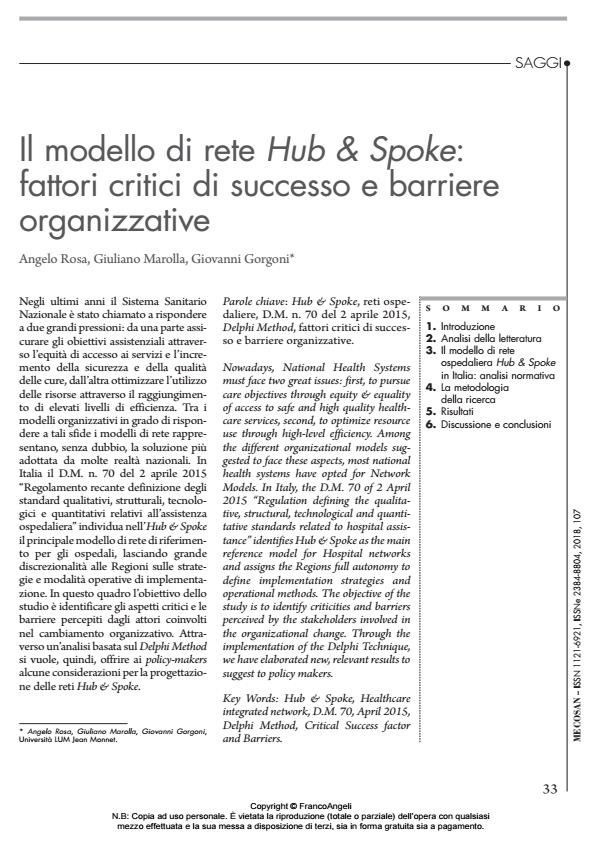Il modello di rete Hub & Spoke: fattori critici di successo e barriere organizzative
Journal title MECOSAN
Author/s Angelo Rosa, Giuliano Marolla, Giovanni Gorgoni
Publishing Year 2019 Issue 2018/107
Language Italian Pages 24 P. 33-56 File size 360 KB
DOI 10.3280/MESA2018-107003
DOI is like a bar code for intellectual property: to have more infomation
click here
Below, you can see the article first page
If you want to buy this article in PDF format, you can do it, following the instructions to buy download credits

FrancoAngeli is member of Publishers International Linking Association, Inc (PILA), a not-for-profit association which run the CrossRef service enabling links to and from online scholarly content.
Nowadays, National Health Systems must face two great issues: first, to pursue care objectives through equity & equality of access to safe and high quality healthcare services, second, to optimize resource use through high-level efficiency. Among the different organizational models suggested to face these aspects, most national health systems have opted for Network Models. In Italy, the D.M. 70 of 2 April 2015 "Regulation defining the qualitative, structural, technological and quantitative standards related to hospital assistance" identifies Hub & Spoke as the main reference model for Hospital networks and assigns the Regions full autonomy to define implementation strategies and operational methods. The objective of the study is to identify criticities and barriers perceived by the stakeholders involved in the organizational change. Through the implementation of the Delphi Technique, we have elaborated new, relevant results to suggest to policy makers.
Keywords: Hub & Spoke, Healthcare integrated network, D.M. 70, April 2015, Delphi Method, Critical Success factor and Barriers.
Angelo Rosa, Giuliano Marolla, Giovanni Gorgoni, Il modello di rete Hub & Spoke: fattori critici di successo e barriere organizzative in "MECOSAN" 107/2018, pp 33-56, DOI: 10.3280/MESA2018-107003